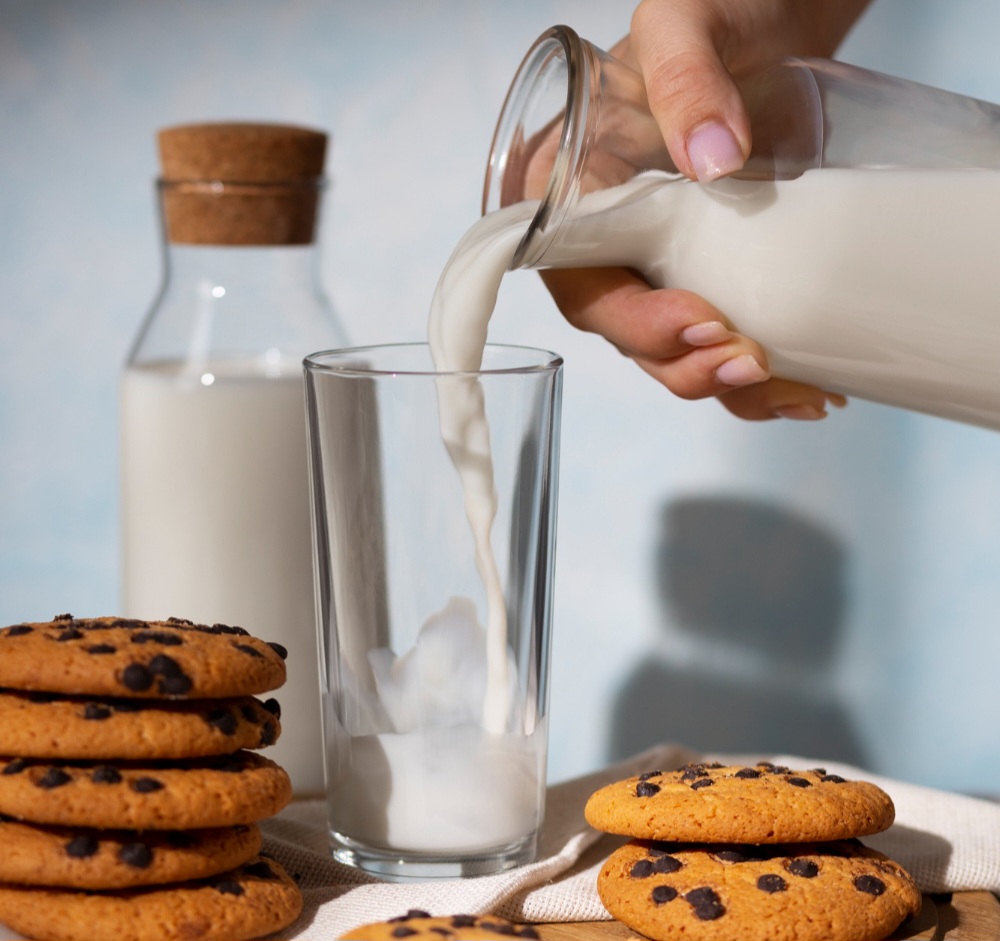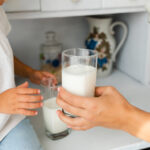
Raw milk is often touted for being more natural and containing more antimicrobials than pasteurized milk. However, many health claims associated with raw milk lack solid evidence, and the potential risks, such as severe infections from harmful bacteria, cannot be overlooked.
Milk is a nutritious beverage that provides essential proteins, vitamins, minerals, and fatty acids. Before the advent of pasteurization in the early to mid-1900s, all milk consumed was raw, in its natural, unprocessed state. Recently, the trend towards natural, locally-sourced foods has spurred an increase in raw milk consumption. This article examines the evidence to assess the benefits and dangers of drinking raw milk.
What is Raw Milk?

Raw milk is milk that has not undergone pasteurization or homogenization. It can come from cows, goats, sheep, buffalo, or even camels and can be used to make various products, including cheese, yogurt, and ice cream. Approximately 1% of Americans consume raw milk regularly.
The Pasteurization Process
Pasteurization involves heating milk to eliminate bacteria, yeasts, and molds, extending its shelf life. The most common method in the U.S. today is High-Temperature Short-Time (HTST) pasteurization, which heats milk to at least 161°F for 15 seconds. Another method, used worldwide, involves heating milk to 145°F (63°C) for 30 minutes. Ultra-Heat Treatment (UHT) heats milk to 275°F (135°C) for a few seconds, significantly extending shelf life up to nine months. Pasteurization increases milk’s shelf life and often includes homogenization, a process that evenly disperses fatty acids to improve appearance and taste.
Common Claims About Raw Milk’s Benefits
Proponents of raw milk argue that it is a complete, natural food containing more amino acids, antimicrobials, vitamins, minerals, and fatty acids than pasteurized milk. They claim it is better for those with lactose intolerance, asthma, and autoimmune and allergic conditions.
Pasteurization was introduced to combat bovine tuberculosis, which caused significant deaths from contaminated dairy. Some advocates argue that many harmful bacteria eliminated by pasteurization, such as tuberculosis, are no longer a concern. They also claim pasteurization reduces milk’s nutritional value, though these assertions lack strong scientific backing.
Claim 1: Pasteurized Milk Has Fewer Nutrients
Pasteurization does not significantly reduce the levels of vitamins, carbohydrates, minerals, or fats in milk. A comprehensive meta-analysis found only minor losses of water-soluble vitamins (B1, B6, B9, B12, and C) during pasteurization, which are not significant enough to impact overall nutrition. Fat-soluble vitamins (A, D, E, and K) also see minimal reductions. Milk remains rich in calcium and phosphorus, essential for healthy bones and metabolic functions, with these minerals being heat-stable.
Claim 2: Pasteurizing Milk Reduces Fatty Acids
Studies show no significant differences in the fatty acid profiles of raw and pasteurized milk. Pasteurization may even improve the digestibility of fatty acids.
Claim 3: Pasteurizing Milk Destroys Proteins
Pasteurization does not reduce the casein levels in milk, which is a heat-stable protein. While whey protein is more heat-sensitive, pasteurization has minimal impact on its nutritional value. Research shows that pasteurized milk proteins have the same biological activity in the body as raw milk proteins.
Claim 4: Raw Milk Protects Against Allergies and Asthma
Some studies suggest raw milk consumption in children is associated with lower rates of asthma and allergic rhinitis. However, these studies indicate an associated risk reduction rather than a direct cause-and-effect relationship. Increased exposure to farm environments and microbes may also contribute to reduced allergy and asthma rates.
Claim 5: Raw Milk is Better for People with Lactose Intolerance
Raw and pasteurized milk contain similar amounts of lactose. While raw milk has lactase-producing bacteria, which theoretically could help with lactose digestion, studies have found no significant differences in digestive symptoms between raw and pasteurized milk for lactose-intolerant individuals.
Claim 6: Raw Milk Contains More Antimicrobials
Raw milk contains various antimicrobials, but their activity is reduced when milk is refrigerated. Pasteurization slightly reduces lactoperoxidase activity but has minimal impact on other antimicrobials.
The Dangers of Drinking Raw Milk
Raw milk’s neutral pH and high nutritional content make it an ideal breeding ground for bacteria. Contamination can occur from the udder, skin, feces, milking equipment, handling, and storage. Harmful bacteria in raw milk can include Campylobacter, Salmonella, E. coli, Coxiella burnetti, Cryptosporidium, Yersinia enterocolitica, Staphylococcus aureus, and Listeria monocytogenes. Symptoms of infection range from vomiting, diarrhea, and dehydration to severe conditions like Guillain-Barre syndrome, hemolytic uremic syndrome, miscarriage, and chronic inflammatory conditions.
Who is Most at Risk?
Anyone can get sick from contaminated milk, but the risk is higher for pregnant people, children, older adults, and those with weakened immune systems. More than half of all raw milk-related disease outbreaks involve children under age five.
Severity of Raw Milk Outbreaks
From 1993 to 2006, raw milk caused 60% of the 4,413 dairy-related illness reports in the U.S. Those infected by raw milk were 13 times more likely to be hospitalized compared to those who consumed pasteurized milk. Raw milk and cheese cause significantly more illnesses and hospitalizations than pasteurized dairy products. Many countries ban raw milk for human consumption, and its sale is restricted in several U.S. states.
Summary
While raw milk is marketed as more natural and nutritious, the scientific evidence does not support most of these claims. The potential health benefits do not outweigh the significant risks of severe infections from harmful bacteria. Pasteurized milk remains a safer choice, providing essential nutrients without the associated dangers of raw milk consumption
A Quick Review
Raw milk, while natural and unprocessed, poses significant health risks due to potential contamination with harmful bacteria. Pasteurization, a process that heats milk to kill pathogens, minimally affects its nutritional value. Claims about raw milk’s superior health benefits lack strong scientific backing. Given the risks of severe infections, pasteurized milk remains a safer choice for most people.











